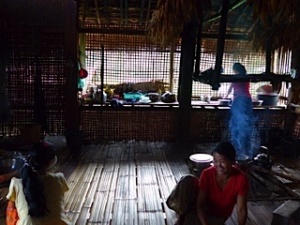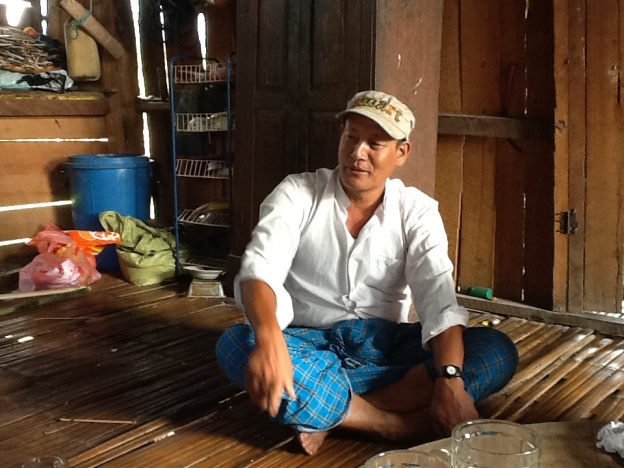The practice of paying bride price or dowery is not Christian or unchristian, Hindu, or the province of any particular religion or culture. In modern society, it lives on. Marriage is one of life’s most significant economic transactions, and it’s supposed to be a lifetime deal. While today we stress romance between two people, and perhaps what each brings to the table, across time the economic linking of two families or clans was given more weight. The bonds, opportunities, and obligations created among people beyond the bride and groom create the web of community in which all reside. Bride price and dowery are forms of wealth transference or early inheritance that have served the economic and social puposes of the times and societies that created them.
Where did the tradition of the father of the bride paying for the wedding come from? And how does such “dowery-mindset” behavior (along with hope chests, bottom drawers, trousseaux, etc.) contrast with the rationale behind bride price? Is one more sexist? It depends on whether you judge putting cash value on the bride (which the groom’s family pays to her father) is worse than putting it on the groom.
These are questions still being discussed and contested and well beyond the scope of this blog. But suffice to say that in traditional Lisu culture, every woman, no matter how old, remembers the exact price her father received for her hand. Usually, this price is rather predictable, but it is still a source of pride because it shows she is as good as anyone else. It supports Lisu egalitarian values. If she fetched a higher than usual price, it adds to her and especially to her father’s myi-do (repute) because it means she especially embodies Lisu feminine virtures of hard work, skill, modesty. The Lisu are competitive.
So back to the Kachin kitchen, where I’m about to test this theory on a mixed group of Lisu Christian women, mainly from fairly prosperous farming famillies. I’m a bit nervous, because I don’t want to offend my host, the Chairman of the Cultural Committee. Lisu Christians often eschew the practice, or deny it is still practiced. Paying bride price is often lumped in, somewhat mistakenly I think, with the Lisu pre-Christian practice of propitiating multiple spirits — which indeed Christians have stopped doing. The New Testament, the focus of Christian Lisu religious practice, is agnostic on the subject. As far as I can see, the anti-bride price feeling is more a cultural borrowing from missionaries than a religious prohibiton.
“So,” I ask a beautiful young woman with babe in arms, “How much did your father get?” Shyly, but with satisfaction, she said, “Four lakhs,” meaning 400,000 Burmese Kyats (pronounced chat), just over $400. Presumably, no big secret being was being revealed, but murmers of interested approval circulated this room in a country with per capita earnings of less than half that amount.
A middle-aged woman remarked that she had fetched 20,000, but that was a long time ago when the Kyat was more valuable; still another, when asked, reported that her father received 120,000 and a cow. One, married in 1976, seemed pefectly proud that her marriage had enriched father and family by 600 Kyats. It seemed each woman was waiting to be asked. Finally, we got around to the Chairman’s wife. Married in 1977, her bride price included four cows, one buffalo, 3 pigs, and 90,000 Kyats.
We were all really excited by this conversation, but just then the Chairman entered the kitchen. Uh-oh, I thought, hope no one’s in trouble. But apparently, he didn’t want to be excluded any longer. After all, my husband and the two translators were men, and they were in on it.
“Don’t forget,” he teased his wife, “about the two cows I gave your father before we were engaged, they were a sort of advertisement. So, actually, it was six cows all together!” His reminder elicited general merriment — and relief on my part.
So now, the big question to figure out is: how prevalent is bride price today? Until this conversation, I’d been told by many that the tradition had fallen out of practice among Christian Lisu, who make up perhaps 90% of those In Myanmar (Burma). In Thailand, where most Lisu practice an animist/Buddhist spirtual path, evidence shows bride price persists. Lisu brides are expensive, I’m told, and so many young men choose Lahu, or other minority mates. I will follow up next week in China, and report back.
That rainy afternoon near Putao, only one woman related a story about a daughter’s marriage taking place without “the sliver being paid.” Taking my lead from old accounts of situations in which this anomally occured, I asked, “So, she must have been crazy in love with him?”
Yes, the woman nodded, no one could talk her out of him, even though neither family approved and it caused a lot of trouble at the time. “But in this case, it worked out,” she said, gesturing to the young woman sitting next to her with a toddler in her lap. “They are still together.” Said daughter smiled broadly, and sighs wafted around the room.









